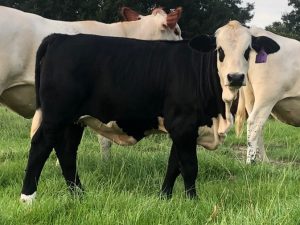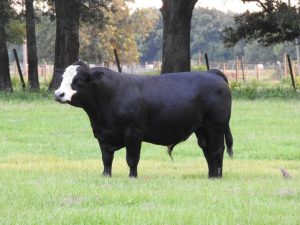Bull sale season is just around the corner as fall approaches, are you looking for a new bull to up your bull power in your herd? Most producers think that the most important selection for their herd should be placed on their replacement heifers, however, the most valuable improvement to a herd is through bull selection. A cow only produces one cow per year where a bull may sire up to 25 calves a year or more depending on your breeding season. The reality is 87.5% of genetic improvement for a herd is through bull selection. Before buying a bull, I encourage you to think through the following questions.
What is your Budget?
When purchasing a bull from a sale it is always good to establish your budget before attending the sale. What are you willing to spend to up your bull power? Always establish a back up plan too, what if the bull you really want to purchase is out of your budget, look through and select multiple picks prior to the sale and rate those bulls. Your first pick may be out of budget, but surely there are other options to get the job done.
What is the goal of your operation?

The goal of your operation will help you to establish what EPD or expected progeny difference values are most important to you and what you should focus on. Also, establishing a goal may help you decide what breed you need to purchase too. If you are planning to breed for replacements your focus maybe on maternal traits. If you are selling at the time of weaning your emphasis may be on growth traits. If you plan to retain ownership of your calf crop and feed through the finishing phase carcass traits may be your focus. Have a specific goal in mind to target your selection toward.
What will this bull be used on?
If you are using this bull to breed your heifers more emphasis should be placed on birth weight to avoid calving difficulties. If you have smaller framed cattle you may focus on birth weight too.
What do the EPD values in the sale catalog represent?
EPD- Expected Progeny Difference which is the best estimate of an animal’s genetic merit for specific traits
BW- Birth Weight, predicts the calf size and calving ease
WW- Weaning Weight, predicts the preweaning growth potential
YW- Yearling Weight, predicts overall growth potential
Milk- EPD predicts the maternal contribution to weaning weight of a calf through milk production
TM- Total Maternal, predicts the weaning weights of progeny from bull’s daughters
IMF- Intramuscular Fat, predicts the % of fat in relation to marbling
REA- Ribeye Area, predicts total muscle
FT- Fat Thickness, predicts the external fat thickness
SC- Scrotal Circumference, predicts testicular size
Depending on the goal of your breeding program it should guide your selection of bulls to best improve your herd.
What physical traits should be looked at when purchasing a bull?
Structure- Is highly heritable, feet and legs are the most important visual trait to look at. A bull must get out and travel to be able to cover cows if he isn’t comfortable to get out and go you may be disappointed. Also look at hock structure a bull too straight in his hock or with too much set to his hock may be uncomfortable when breeding cows.
Hair Coat- Does the bull have the ability to slick off where he doesn’t get to hot when doing his job? A bull in the pond or in the shade has no value to your program.
Fleshing Ability- Does the bull have the ability to go to work and maintain his body score, or is he able to flesh back easily once his job is done?
Disposition- Is this bull manageable, his disposition will affect how his calf crop acts. An unmanageable bull may not be the best fit for your operation.
Muscle- Does the bull have power? A heavy muscled bull will add pounds to your calf crop.
Capacity- Does the bull have depth of body? Rib shape is important especially if keeping heifers but can also impact body shape which impacts carcass yield.
Sheath- How does the bull carry his sheath? A bull with a long sheath in rough country may have physical damaging, a long sheath allows for the opportunity for it to get hung, stepped on, or not have appropriate angle to service a cow.
Testicles- Does the bull have both testes? Are they evenly shaped and carried appropriately?

Conclusion
Take time to think through the purchase of your new herd bull. Remember he will most likely impact your herd for the next 5 years. This investment can work to increase your herd productivity if planned correctly or cause a major set back if not rationally thought out. As you attend your next sale to power up your cow herd think through these questions to make your best selection.
 4
4
